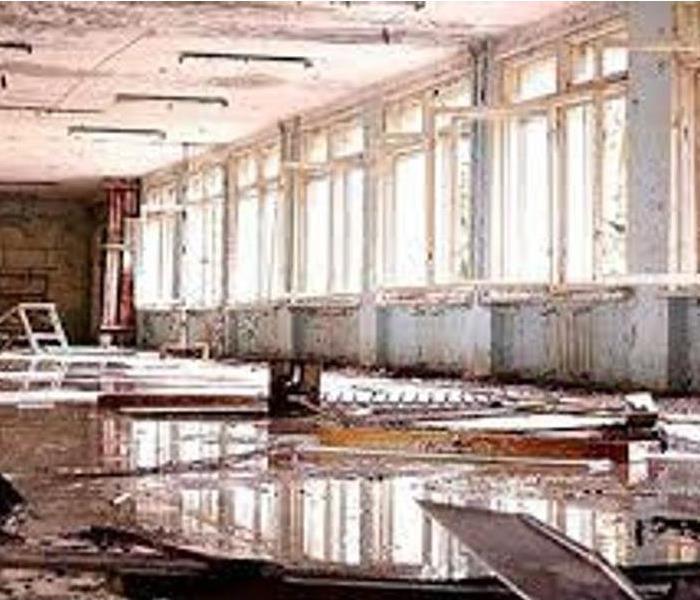Commercial Water Damage
10/5/2021 (Permalink)
 When there’s a need for commercial water damage service, the scale and consequences of damage are often more extensive.
When there’s a need for commercial water damage service, the scale and consequences of damage are often more extensive.
When there’s a need for commercial water damage service, the scale and consequences of damage are often more extensive than residential incidents. Potential losses may be greater, as well, as critical equipment and products may be endangered and a normal business interrupted. Company workers may also be facing a disruption in income because the affected building is not habitable.
Here are some other reasons why commercial water damage can be specifically challenging:
- Higher water pressure. Commercial buildings often utilize higher water pressure to service the larger structure plus specific needs relating to the company business. That means a greater volume of water may be released faster into the building in the event of a ruptured water supply line.
- Larger roof area. Because of the typically larger square footage of a commercial building, the potential damage from roof leakage is also more likely. Since many commercial roofs are flat, leakage from deep standing water on the roof due to inadequate or blocked roof drainage is also more prevalent.
- Hidden damage. Commercial buildings often incorporate more areas of the structure where water damage can occur without immediate notice. Plumbing pipes are often routed through unseen or seldom-visited areas.
- Unoccupied premises. Because commercial buildings are often not occupied for long periods over weekends and holidays, water damage occurring in that time frame may be very advanced by the time it’s discovered.
Commercial Water Damage Service
Water damage in a commercial building can mean a substantial reduction of revenue as well as lost customers. SERVPRO of Streamwood, Bartlett, West Chicago, and Warrenville takes into account the unique requirements of a business, including:
- Rapid response—24/7/365—to return all company functions and services to normal operation, ASAP.
- Site security while water damage recovery services are underway.
- Techniques to isolate water-damaged areas of the building from unaffected areas in order to keep as much of the company operational as possible.
- Attention to preventing ancillary issues such as excessively high indoor humidity that damages business paperwork and documents.





 24/7 Emergency Service
24/7 Emergency Service